With the warm fall we’ve been enjoying, it may be hard to remember that winter is just around the corner. Soon enough, however, we’ll be battling snow and frozen ground as we take care of our equine companions. It’s important to put some thought and time into preparing your horse and your property before winter sneaks up on us completely. We’ve outlined a few things to keep in mind to help this transition time be as seamless as possible.
First, take a look at your horse’s diet over the winter. At this time, grasses are starting to die off, and it will become important to add in hay as the main roughage source (as long as your horse can appropriately chew hay, that is!). If you have ordered a large amount of hay, consider having it tested for nutrients. (You can send hay to DairyOne, in Ithaca, NY for full analysis.) This information can help your veterinarian and/or nutritionist properly balance your horse’s ration. Also, take care to slowly switch your horse’s diet, instead of abruptly adding a different roughage source. Any sudden change in your horse’s diet can increase the risk of colic. While changing hay is not thought to be as drastic to the horse as a change in grain, it certainly can upset the digestive system.
To be sure that your horse can appropriately chew a coarser diet over the winter, a little attention to their teeth is in order. Oral examinations by a veterinarian are recommended once yearly for all horses, and fall is a great time to schedule that exam. This exam should be performed with a full mouth speculum – this allows for a visual as well as manual exam (meaning all teeth should be looked at as well as palpated). Loose teeth may need to be extracted, or a wave/step mouth may need to be adjusted to allow your horse to be able to chew more properly. Many older horses develop a “smooth mouth” as they age, which reduces the grinding surface of their teeth. These horses will need alternative roughage sources, such as soaked hay cubes/pellets, or chopped hay. An oral examination will allow your veterinarian to make these diet change recommendations.
Preparing your horse’s feet for winter is another important consideration. Many people plan to pull their (normally shod) horses’ shoes over the winter, since they won’t be riding as much. This is a fine plan, as long as your horse’s feet are tough enough to stand up to rough conditions. Be aware, however, that your horse’s feet will take a few weeks to toughen up after shoes are removed. Light riding, turnout on softer ground, and avoiding rough/rocky footing is important while your horse adapts to being barefoot. If you choose to maintain your horse in shoes over the winter, consider some adaptations to these shoes to help provide traction in icy and snowy conditions. Snow pads are sometimes helpful in reducing “ice-balls” which can build up within a shoe. The addition of borium to the bottom of the shoe can increase traction on ice – but be aware that this is a trade-off with potentially increase in strain on soft tissue structures. If your horse is normally barefoot, you’re not off the hook – pay attention to how the feet are reacting to firmer ground or icy conditions as the winter sets in. Hoof boots can be helpful in protecting your barefoot horse’s feet from very hard, frozen ground.
Another preventative health care consideration for fall is deworming. As most regular readers of this blog will know, we advise routine fecal egg counts to check for parasite burdens and make deworming recommendations based on those counts. But even if we NEVER see an egg in your horse’s sample, and your horse never leaves the property, we still recommend deworming at least once a year, and we do that in the fall. The reasons behind that recommendation could be a whole ‘nother blog – but suffice it to say that horses tend to have lower egg counts when they are dewormed correctly in the fall. We typically recommend either an ivermectin or moxidectin product in combination with praziquantel – but always feel free to chat with us regarding what is best for your horse.
Finally, take a look at your property, barn, fencing, and any other structures that your horses will be exposed to this winter. Is everything structurally sound? Is the roof on the barn ready for a few feet of snow? Can your fencing withstand a Nor’easter? How about that dead tree in the paddock that’s been threatening to come down all year? Now is the time to make adjustments to your barn and paddocks, before icy conditions make repairs much more difficult.
With a bit of forethought, this winter can be a breeze for you and your horses. Taking a few minutes now can save you time and frustration in January – and you can use that time to sit by the fire with a cup of hot chocolate and a good equine magazine in hand! We wish you all a peaceful fall, and a safe and snug winter season (when it comes, that is. Let’s not be TOO hasty!)


